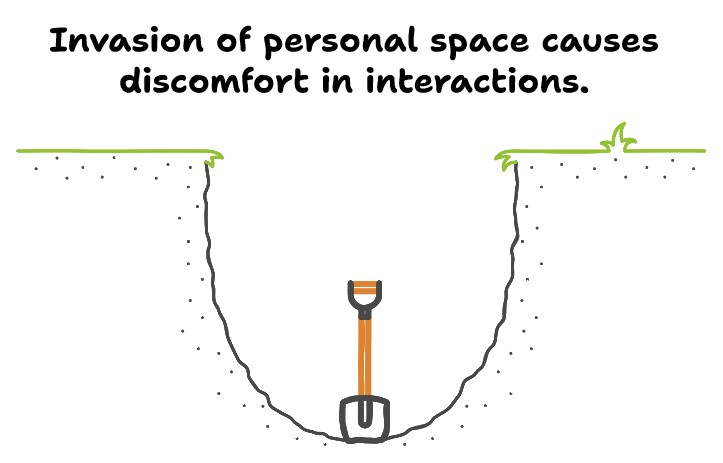Since we were kids, we are told to bend and mold ourselves to make others comfortable. Sometimes this messaging is implied (how to dress, how to wear your hair and, for instance), and sometimes it is direct (“I don’t’ care if you don’t want to hug your grandfather, it’s rude not to!”), but it’s always there, we all had it. So it’s no wonder that most of us find it difficult to set appropriate boundaries as we get older. We don’t want to offend or hurt others, even when that avoidance ultimately means hurting ourselves. We’ve been taught from a young age to put the feelings of others ahead of our own needs. As an adult, if you want to live a life that is truly yours, this is not a healthy or effective strategy anymore. As a kid you did not have a choice, as an adult you do! What are personal boundaries? Personal boundaries are simply the lines we draw for ourselves in terms of our level of comfort around others. Your boundaries will concern all the areas that are essential to you and are typically focused on : physical contact – for example, some people are “huggers” but you may not feeling comfortable hugging a person you’ve just met, relationship and personal interactions – communication is key of human interaction but HOW we say is just as important as WHAT we say, if not more so you do have the right to define what is acceptable and what not in terms of how people talk to you – for ex. not wanting a friend or family member to speak down to you, our own personal space – you have the right to choose who you spend time with, who is entering your home when you are or even when you are not at home If you find it difficult to start working on your boundaries, start by breaking it down to area of life, relationship, or behaviors, here some examples : emotional (protecting our own emotional well-being), physical (protecting our physical space), sexual (protecting our needs and safety sexually), workplace (protecting our ability to do our work without interference or drama), material (protecting our personal and material belongings), time (protecting the use, and misuse, of our time), energy (protecting your energy , choosing consciously on what to “spend “it and what not). Really, any time you are talking about engaging with others, you’ve likely got personal boundaries that surround that situation. Personal boundaries don’t have to be communicated for them to exist. We all have our lines of discomfort — they’re there whether you tell others about them or not. Still, personal boundaries are more likely to be violated if we don’t communicate them. And here is the part that is much less discussed, so let’s talk about the elephant in the room because that’s when problems may occur. Setting boundaries is simply about communicating your needs for healthy interaction to someone else. It’s simple process that isn’t always easy. Not everyone will like or understand your boundaries or your reasons for setting them. But if you don’t set those boundaries, you certainly can’t expect them to be followed. It often takes courage and strength to set boundaries, but when you do so, you can feel comfortable knowing your lines have been set. Your needs have been communicated. And if someone chooses to violate your boundaries after that, you would be within your rights to create further distance between yourself and that person. What you may soon find is that the people who are the most bothered about your set and communicated boundaries are exactly the ones that have been benefiting from you not having them.
